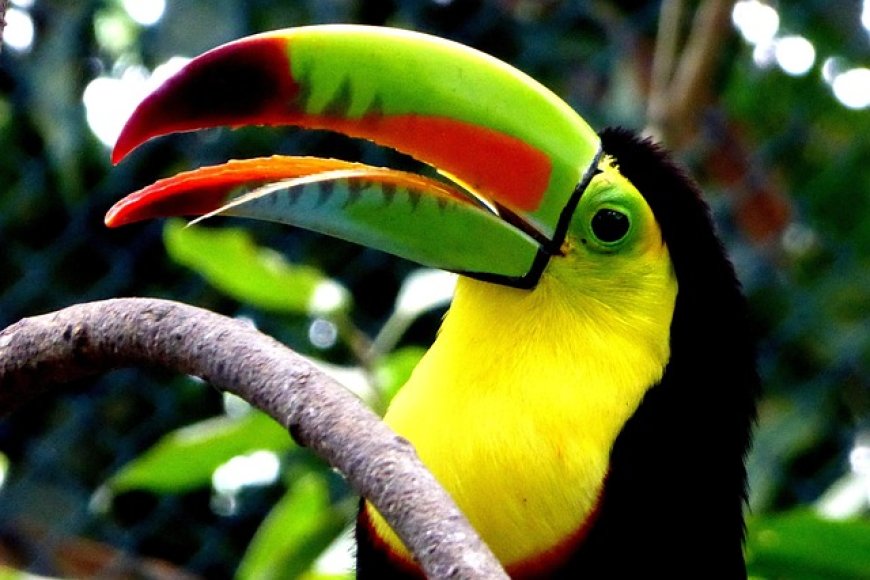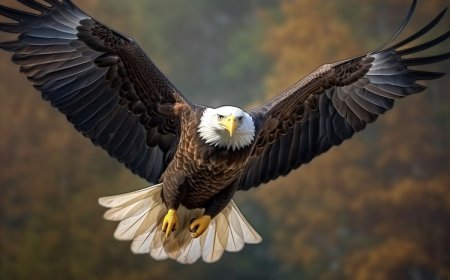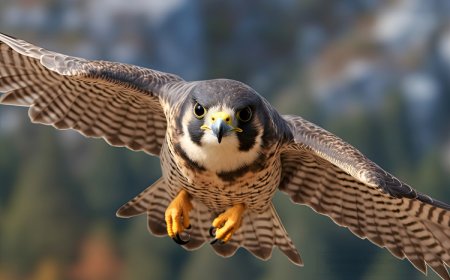Birds-Bird Species, Adaptations, and Fascinating Facts
Discover fascinating facts about birds—the only animals with feathers! Learn about their physical features, habitats, diets, lifecycles, and behavior.

Introduction
Birds are some of the most fascinating creatures on Earth. With over 10,000 species, they can be found on every continent, from icy Antarctica to tropical rainforests. Birds are known for their feathers, beaks, and the ability to fly, though some, like ostriches and penguins, are flightless. In this article, you will learn about birds’ scientific classification, their amazing adaptations, where they live, what they eat, how they reproduce, and why protecting them matters.
Scientific Classification
Here is how scientists classify birds:
- Kingdom: Animalia
- Phylum: Chordata
- Class: Aves
- Orders: More than 40 orders, including Passeriformes (songbirds), Falconiformes (hawks), and Anseriformes (ducks)
- Families and Species: Over 200 families and more than 10,000 species
Description and Adaptations
Birds have evolved unique features to survive in many different environments.
Basic Characteristics:
- Feathers: All birds have feathers that provide insulation, aid in flight, and often help with camouflage.
- Beaks: Birds have beaks or bills shaped for their diets. Hawks have sharp hooked beaks, while ducks have broad flat bills.
- Lightweight bones: Their skeletons are light but strong.
- Wings: Most birds have wings adapted for flight.
- Endothermic: Birds are warm-blooded and can keep a constant body temperature.
- Egg laying: All birds lay eggs, usually with hard shells.
Special Adaptations:
- Hollow bones: Reduce weight for easier flight.
- Keen eyesight: Birds of prey can see up to 8 times more clearly than humans.
- Migration abilities: Many birds navigate thousands of miles using the sun, stars, and Earth’s magnetic field.
- Specialized feet: Webbed feet for swimming (ducks), talons for grasping prey (eagles), and perching feet (sparrows).
Habitat and Range
Birds live everywhere:
- Forests: Woodpeckers, owls, parrots.
- Grasslands: Quail, meadowlarks.
- Wetlands: Herons, flamingos, ducks.
- Oceans and coasts: Albatrosses, puffins, gulls.
- Urban areas: Pigeons, sparrows, crows.
Some birds stay in one place all year, while others migrate seasonally, traveling thousands of miles to find food or nesting sites.
Diet and Hunting Behaviors
Bird diets vary greatly, depending on the species:
- Insectivores: Eat insects (swallows, flycatchers).
- Carnivores: Hunt other animals (hawks, owls).
- Frugivores: Eat fruit (toucans, parrots).
- Nectarivores: Drink nectar (hummingbirds).
- Omnivores: Eat plants and animals (crows, gulls).
Hunting and Feeding Behaviors:
- Birds of prey dive at high speeds to catch prey.
- Wading birds use long beaks to probe mud.
- Seed-eating birds have strong beaks for cracking shells.
- Some birds, like herons, stand still to ambush fish.
Reproduction and Nesting
All birds lay eggs, and most build nests to protect them.
Nesting Facts:
- Nests can be simple scrapes on the ground or intricate woven structures.
- Some species, like megapodes, build mounds to incubate eggs.
- Cavity nesters (woodpeckers) drill holes in trees.
Reproduction:
- Females usually lay 1–12 eggs, depending on the species.
- Both parents often care for the eggs and chicks.
- Chicks can be born altricial (helpless, needing care) or precocial (able to move soon after hatching).
Conservation Status
Bird populations face many threats:
- Habitat loss: Forest clearing, wetlands drained.
- Climate change: Alters migration and breeding.
- Pollution: Chemicals can harm eggs and food sources.
- Hunting and poaching: Some species are endangered due to illegal trade.
Examples of endangered birds:
- California Condor
- Kakapo
- Philippine Eagle
- Whooping Crane
Conservation groups protect birds by creating reserves, banning harmful chemicals, and educating communities.
Fun Facts
- Hummingbirds can flap their wings up to 80 times per second.
- The Arctic Tern migrates about 44,000 miles each year.
- Owls can rotate their heads 270 degrees.
- Penguins are birds, but they cannot fly.
- The bee hummingbird is the world’s smallest bird, only 2 inches long.
Vocabulary List
| Word | Definition |
|---|---|
| Adaptation | A special feature that helps an animal survive. |
| Endothermic | Warm-blooded; able to keep a constant body temperature. |
| Migration | The seasonal movement of animals to find food or reproduce. |
| Altricial | Born in a helpless state, needing care and feeding. |
| Precocial | Born able to move and feed themselves soon after hatching. |
| Carnivore | An animal that eats meat. |
| Omnivore | An animal that eats both plants and animals. |
| Frugivore | An animal that mainly eats fruit. |
| Nectarivore | An animal that feeds on nectar from flowers. |
| Conservation | The protection and careful management of natural resources and wildlife. |
Commonly Searched Birds
| Common Name | Scientific Name | Region |
|---|---|---|
| Bald Eagle | Haliaeetus leucocephalus | North America |
| Peregrine Falcon | Falco peregrinus | Worldwide |
| American Robin | Turdus migratorius | North America |
| Blue Jay | Cyanocitta cristata | Eastern North America |
| European Starling | Sturnus vulgaris | Europe, North America |
| Mallard Duck | Anas platyrhynchos | Worldwide |
| Red-tailed Hawk | Buteo jamaicensis | North America |
| Great Horned Owl | Bubo virginianus | North and South America |
| Ruby-throated Hummingbird | Archilochus colubris | Eastern North America |
| House Sparrow | Passer domesticus | Worldwide |
Kid-Friendly Summary
Birds are amazing animals that live all over the world. They have feathers, lay eggs, and most can fly. There are more than 10,000 kinds of birds, like eagles, hummingbirds, and penguins. Some birds travel huge distances every year to find food. Birds can have different diets, from eating bugs to drinking sweet nectar. Sadly, some birds are endangered because their homes are being destroyed. That’s why people work hard to protect them so they don’t disappear.



















































